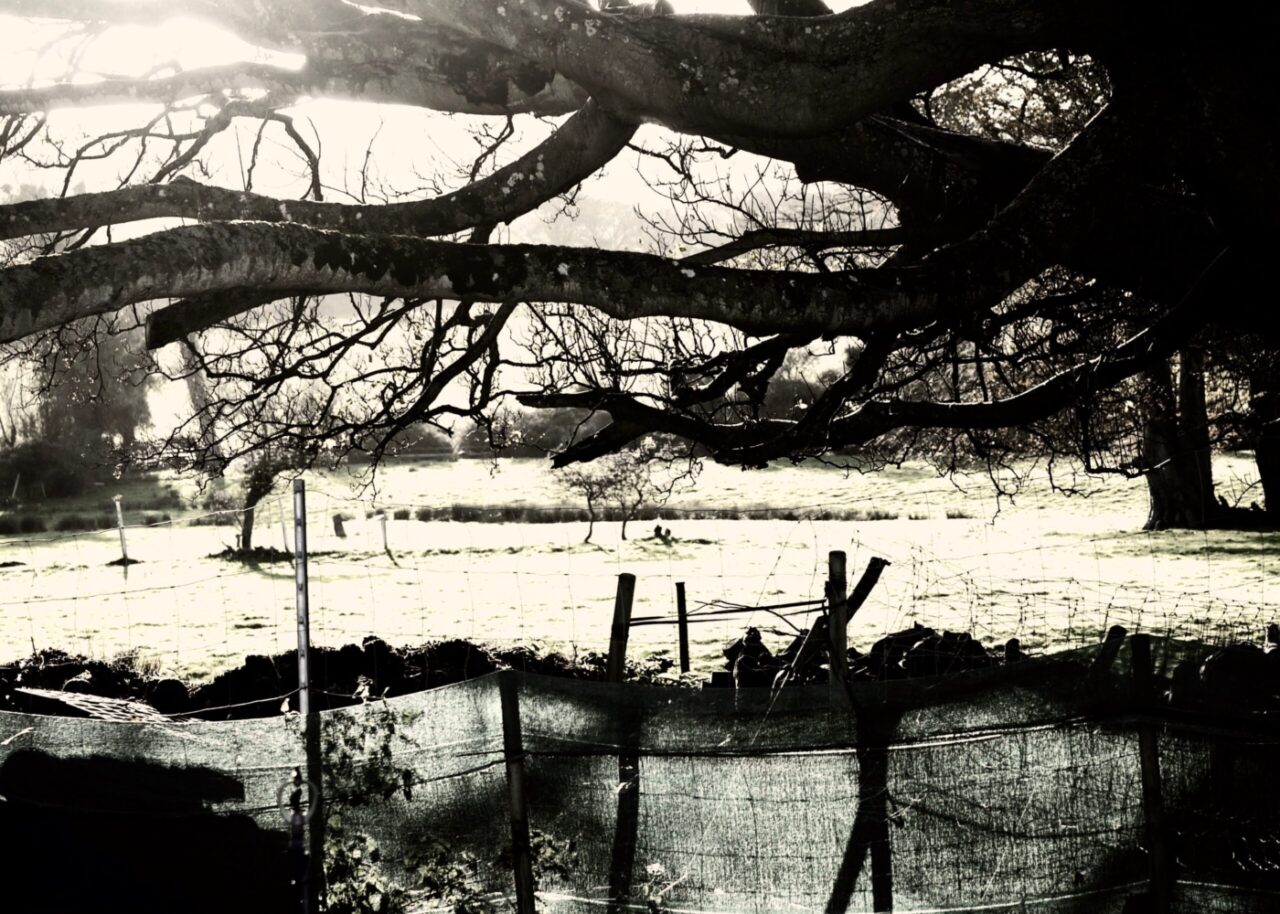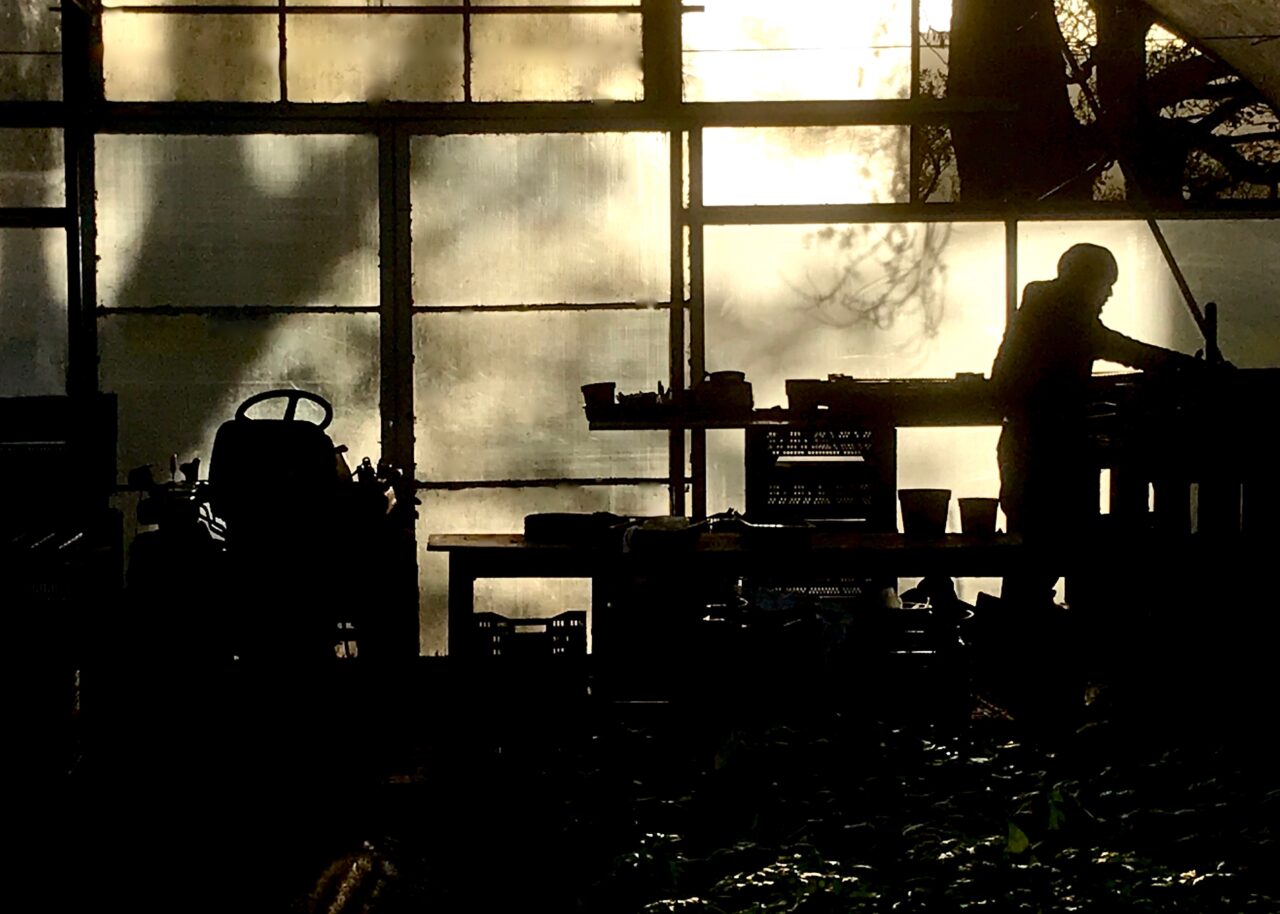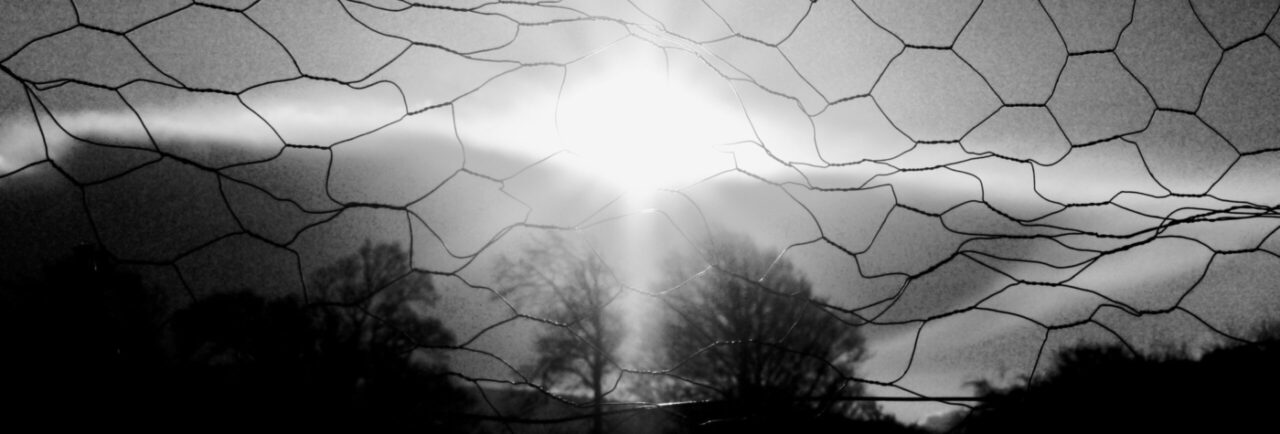
This morning was evidence of the first real dip in temperature, a light frost. A sign, that the line between one season and the next, might well have been crossed during the night.
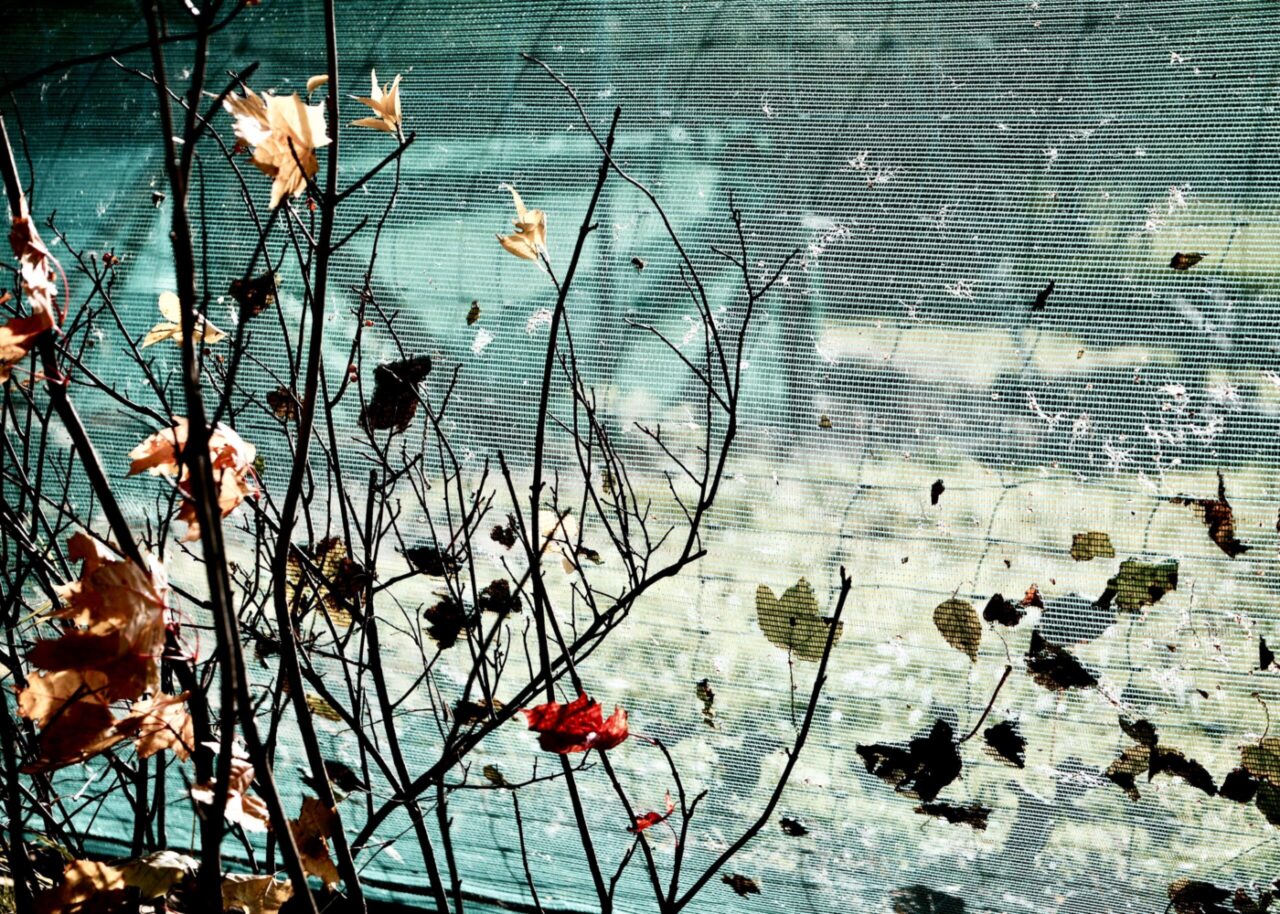
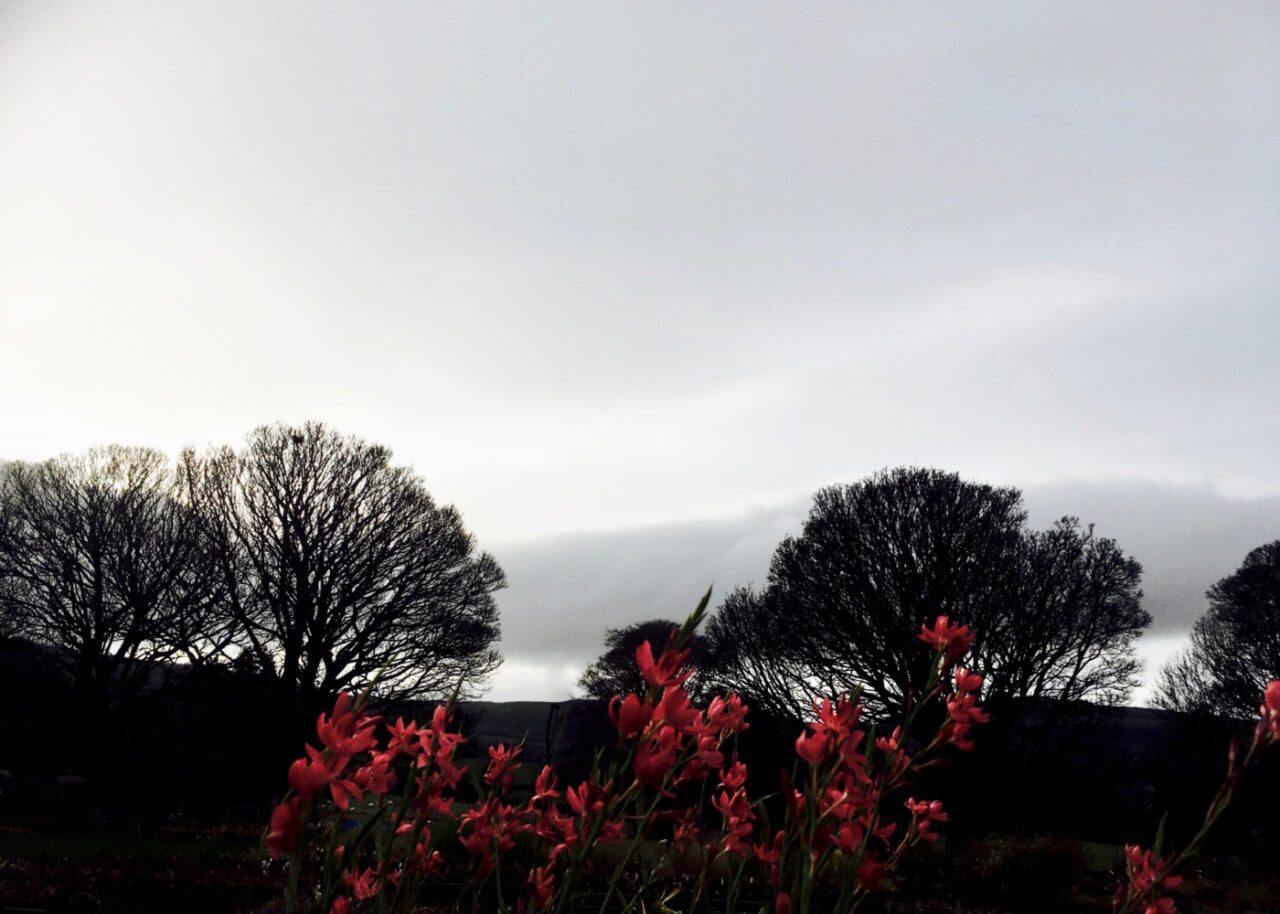
The past few weeks have seen the leaves of Beech, Ash, Sycamore, to the ground. From our walled garden the hills beyond come into focus. A gentle line. Where on clear evenings the sun balances like a big coin. Rolling down along the them. Setting eventually further west. Winter. Comes with a view.
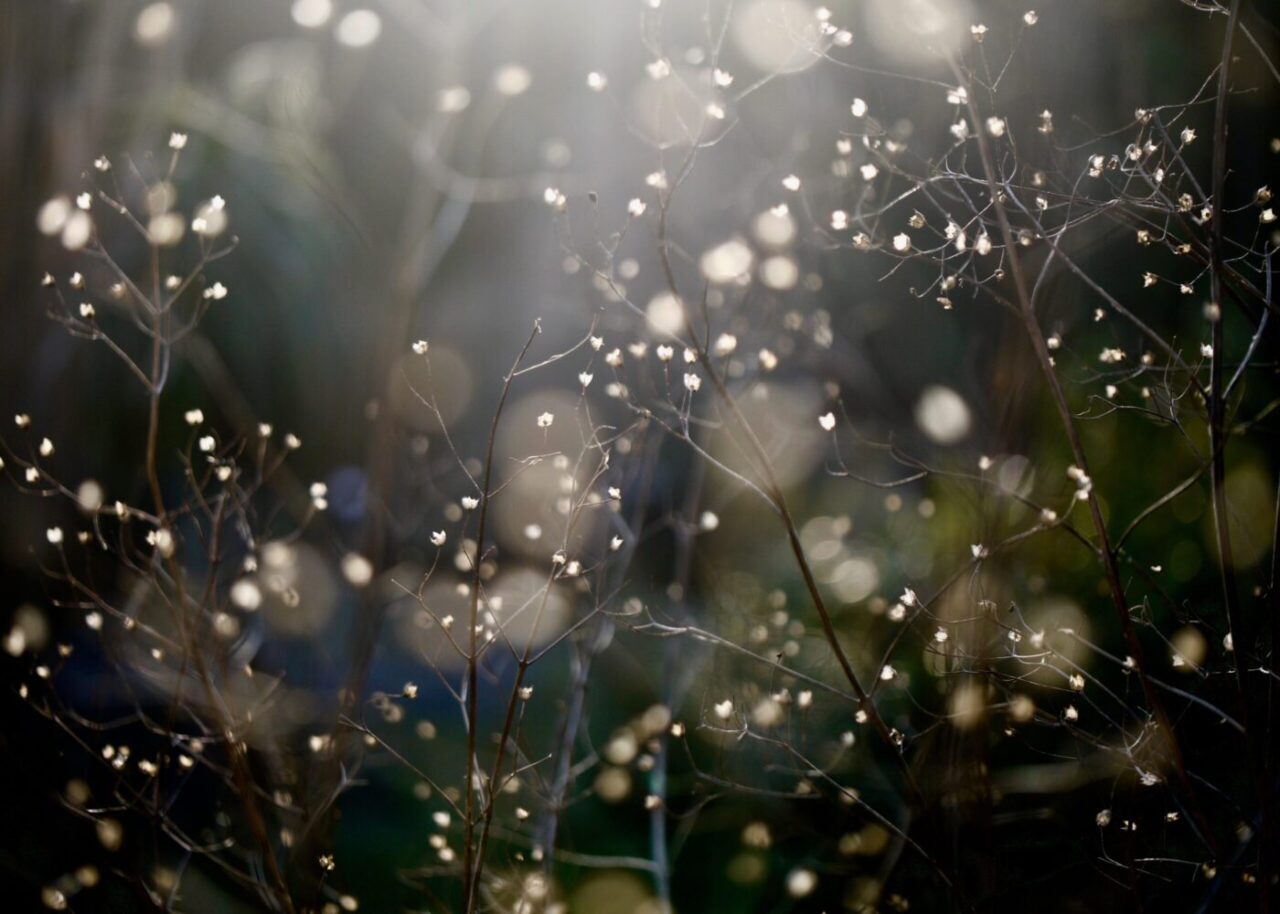
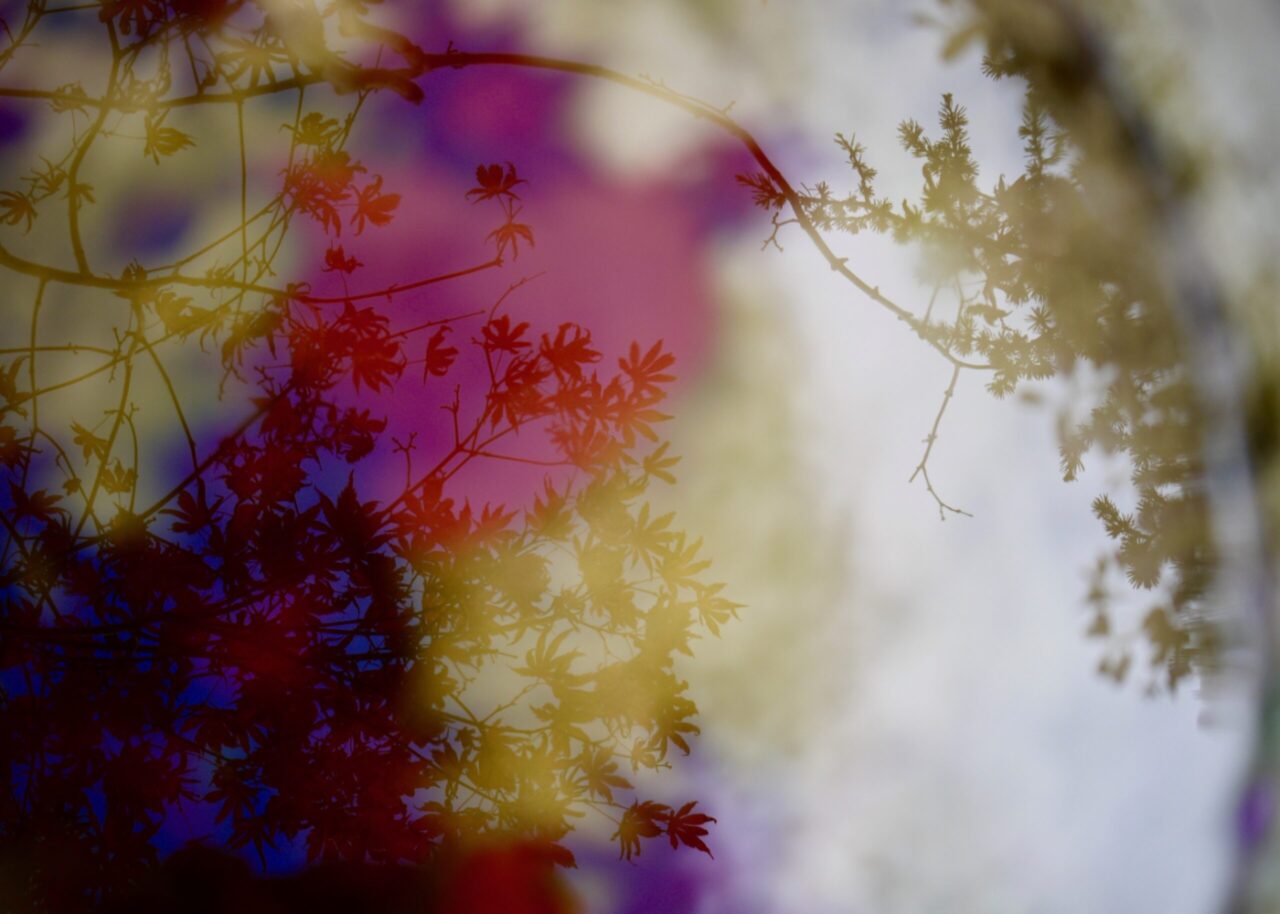
For the majority of vegetation winter is a point of collapse, of reduction. Translucent yellows of softer perennials loosing their arcs, some reduced to single stems and the bones of their notions. Depending on the weeks ahead this could be a slow process but a hard day will test many. This collapse is juxtaposed by the revelation of form and starkness of woody material. A strong wind saw the Acer ‘Garnet’ stripped of its foliage, its twisting trunks made suddenly apparent, a halo of red at its feet to mark the moment.
There is a kind of clarity now, honed in by a shorter day. Opportunity for the eye to travel further, through hedgerow and open canopy. Countless natural frames. Light too, when it comes, is in abundance. Uninterrupted. Find a stand of Birch hit by the low sun and the parchment of its bark can be read in an amber glow. Its lenticels like braille.
As with many things it’s the point of collapse that triggers our consideration. What was, what still stands and what for. Our relationship to plants, these constant companions, has provided both resources for survival, and inspiration for design and innovation.
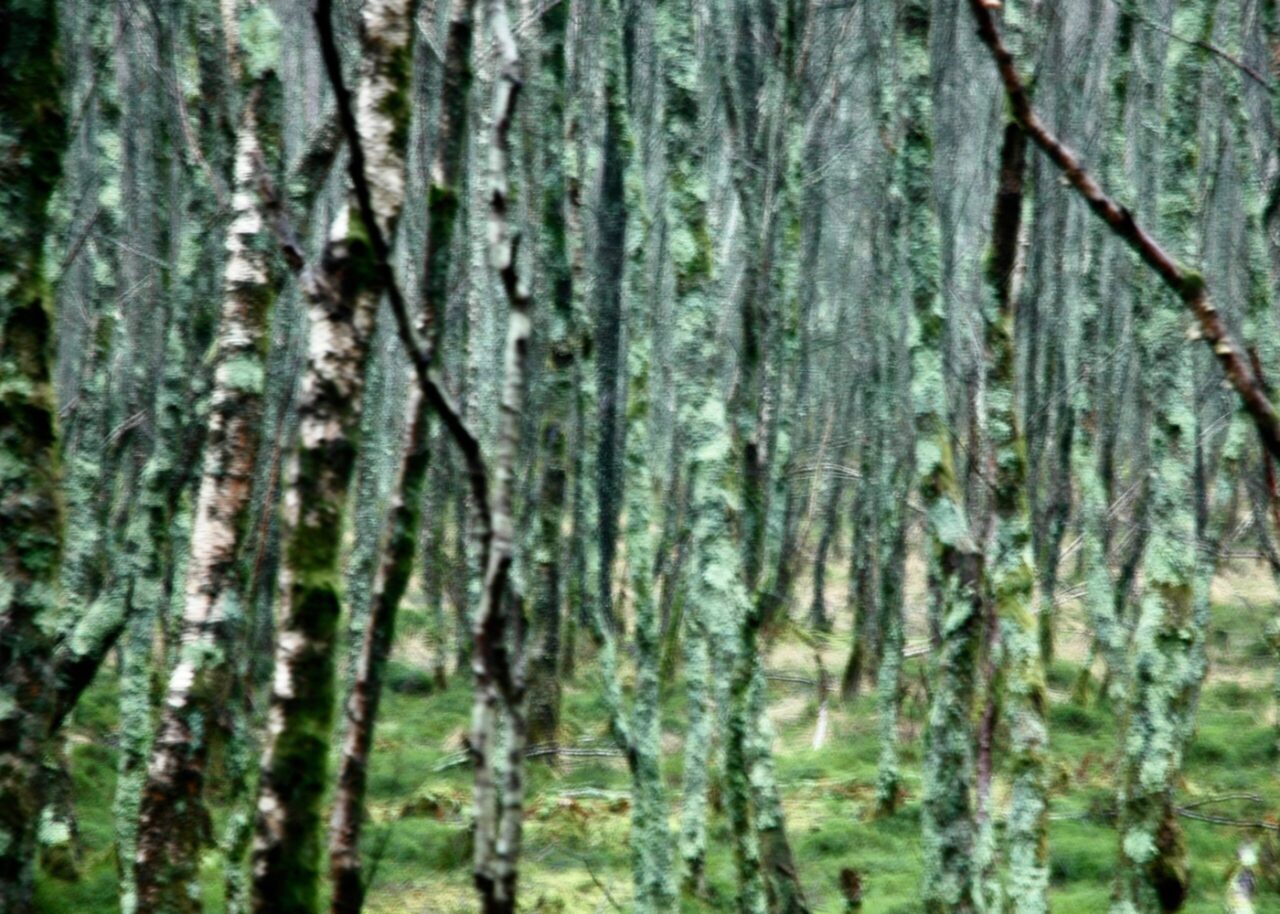
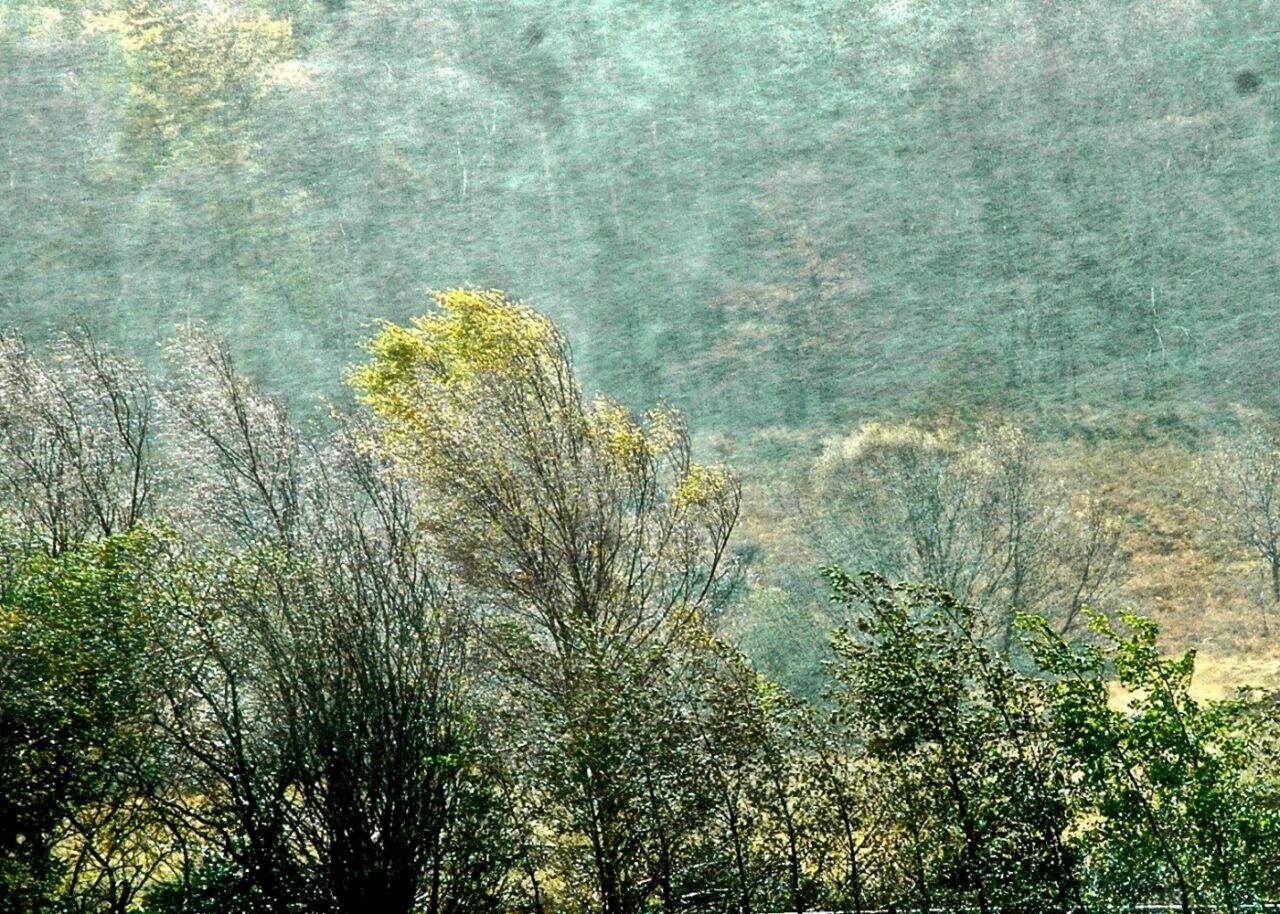
Birch, for example, has a long history of use. Most famously its bark lined the canoes of the indigenous populations of what’s now called North Eastern America and up into Canada. It was also used to write on, before the mass production of paper. The oldest Buddhists text discovered on it. In this we can imagine the respect the tree held. Cutting through waters and holding what was important enough to pass on. The word pioneer should have been reserved for it only. Taking to ground gifted by the passing of larger trees.
Remember Velcro straps pulled tight over a runner if there was something serious to be done? Made possible by the mechanics of a Burdock seed. Many a vase too, holds within its form an echo of a natural structure, the reserve of water mirroring the reserves of a bulb. Glasses owe much to bud and flower alike. The Tulip being one. Impossibly thin stems to support the flower to come. Revered the world over and good enough to cup in your hands.
Most gardeners will be aware of Alchemilla or Nasturtium’s ability to suspend a water droplet. Known as “the lotus affect” Debris on a leaf surface interrupt photosynthesis and can be a host for pathogens, so being able to repel water as droplets essentially wipes clean the surface. This mechanism, once understood, is now used in building surfaces, waterproofing, and even space suits.
It is this balance between function and beauty which is the fulcrum of design. That which communicates knowledge in its response. To situations. Environment. Change. Plants, though reservedly economic, are elegant in theirs.
Look out a window now and this is everywhere – the silver fur of the Magnolia bud harnessing the silver lining of a clouded morning. Its trichomes protecting a flower as old as many fossils and still a porcelain-white or sugared-pink. The winged carrier of the Maple seed making a game of a gust. The thorns of Roses, which when plucked clean and turned resemble a fin cresting. The curve and crescent. To rob from the late John Moriarty ‘there’s not a bone in my body shaped to the earth like that’.
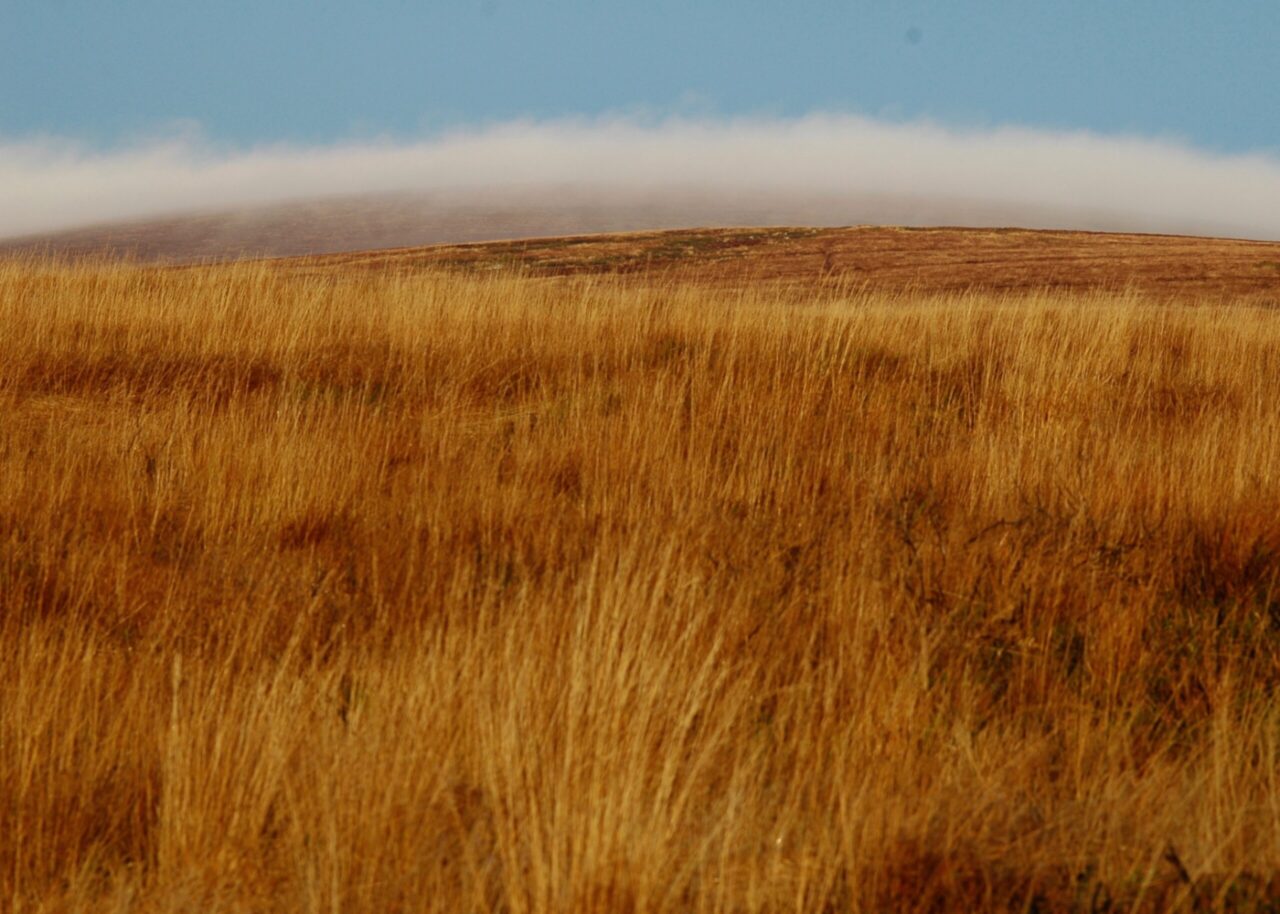
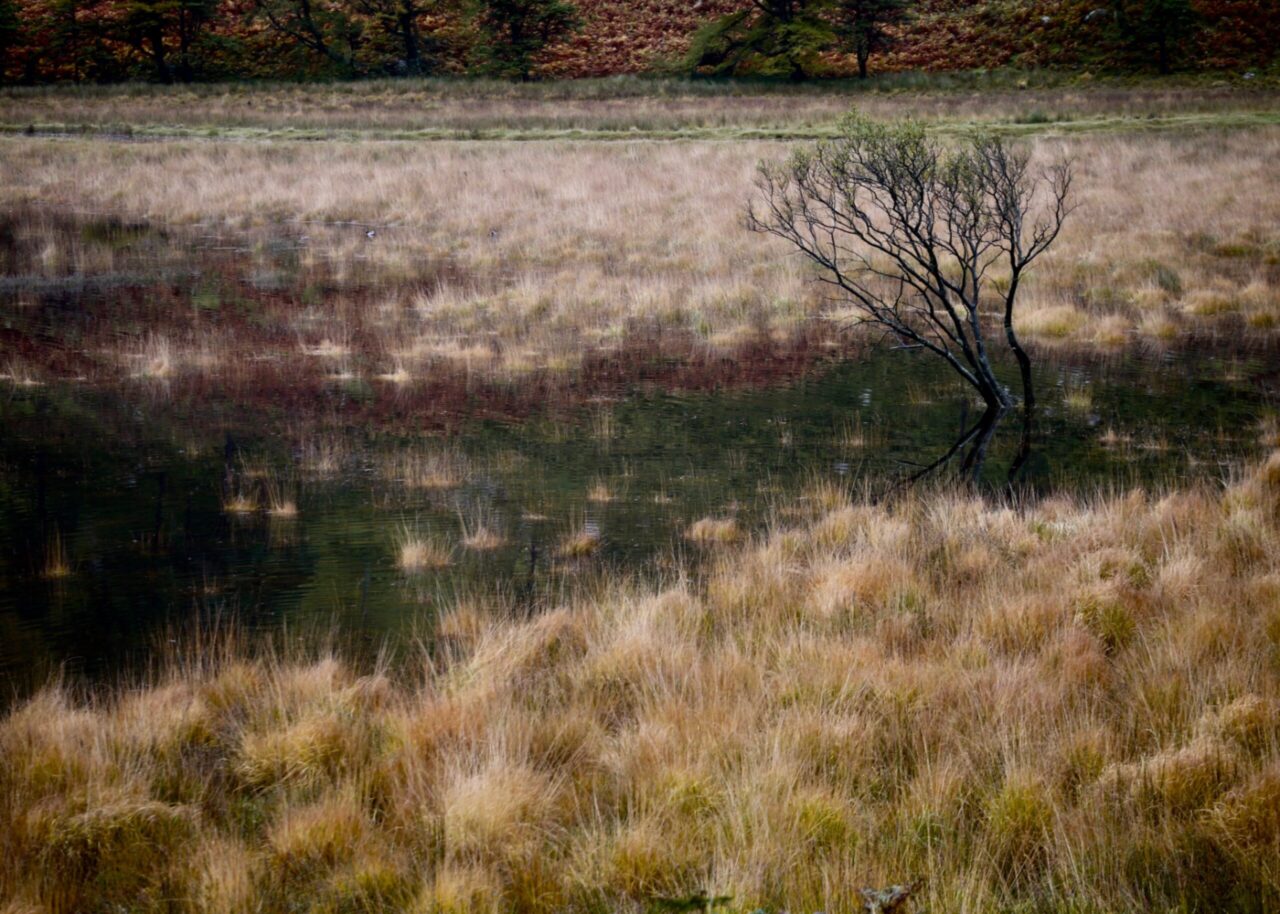
We are in some ways lucky that at our point on the planet the seasons have such difference and drama. Looking out into the wider landscape there is a collection of moments. In the hills swathes of Molinia paint a butter-yellow. Bracken a burgundy-brown striding in each direction. The bleach- bone of Sorbus like a pin in a map in case the eye gets lost in tones. Larch dropping a shoal of needles and taking on a ghostly quality. The wind then blending them to a muddied sky.
Coming across Holly in a deciduous woodland now is to know for the first time the pressurised- green of its leaf. Almost expecting it to produce a pitch when struck by the sudden available light.
Closer to home considering our gardens as a collection of moments is both practical and rewarding. Any time spent near the high street will leave you brutally aware that Christmas is getting closer and how really we would just like to give it our appreciation when it comes. Designing in seasonality is much the same. Giving things their moment and the space to do so is key.
Think of a simple collar of Cyclamen hederiflolium, at the base of that tree down the back. Marine- marble at a loss when not set against the copper tones of fallen leaves. How to discover it amongst them goes toward some part of the joy.
There is a chance now to use a palette past the surge of spring and stride of summer. A calmer palette. Easily put together with an eye a little beyond the pale. Moving through the blonds of grasses like Panicum, Pennisetum, a streak of ivory from the inflorescence of Stipa ichu. The chalk-white tones of perennials like Perovskia and Anaphalis, finally given the all clear to pick up the lichen on the wall, a glint of granite, the peak of their interest long past the flower. Brown can be as detailed as any verse, Agastache, Eupatoirums, Astilbe, laying the ground work for a chorus of red Hawthorn berries above. You and the blackbird taking the time to take it in.
Winter is a season of elements. All this steady reduction clearing the way. Seeing the rain move in sheets across a cobble of fields has it own kind sustenance and is as much of our making as anything that could be peddled. Looking at gardens as a place for these things to interact is down to simplicity. Good bones. A clarity of perspective. A bowl of water can draw the moon into a courtyard. A well placed trees silhouette; charcoal drawn onto the sky. Frost as well, has a kind of binding affect, pulling places together. Heightening structure. Taking to topiary or a clipped hedge it finds a continuity of form beyond the gardeners reach.
While jobs are minimal for the coming months attention sits alongside care, even if it’s just paths to sweep, there will be many skeletal remains. Veins not unlike the meandering of a river. This being a reminder to prune shrubs where needed. How, where you choose to cut/dam, will determine the reach of next years sap. For the time being only in the mind’s eye, but that’s more than half the work.
